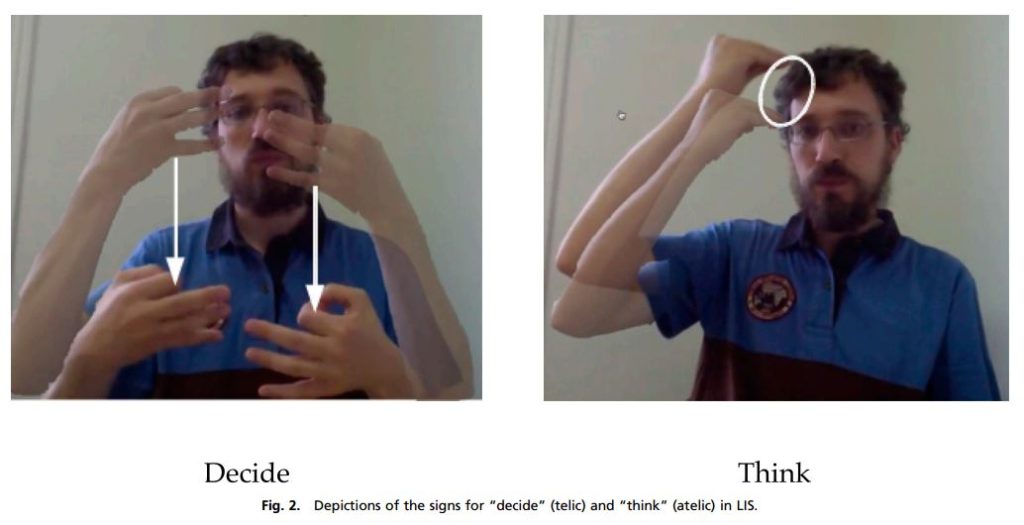Sign language as a window into universally accessible linguistic biases
A very interesting new article: "Event representations constrain the structure of language: Sign language as a window into universally accessible linguistic biases" by Brent Strickland, Carlo Geraci, Emmanuel Chemla, Philippe Schlenker, Meltem Kelepir, and Roland Pfau to appear in PNAS.
Significance:
"One key issue in the study of human language is understanding what, if any, features of individual languages may be universally accessible. Sign languages offer a privileged perspective on this issue because the visual modality can help implement and detect certain properties that may be present but unmarked in spoken languages. The current work finds that fine-grained aspects of verb meanings visibly emerge across unrelated sign languages using identical mappings between meaning and visual form. Moreover, nonsigners lacking prior exposure to sign languages can intuit these meanings from entirely unfamiliar signs. This is highly suggestive that signers and nonsigners share universally accessible notions of telicity as well as universally accessible “mapping biases” between telicity and visual form."
Abstract:
"According to a theoretical tradition dating back to Aristotle, verbs can be classified into two broad categories. Telic verbs (e.g., “decide,” “sell,” “die”) encode a logical endpoint, whereas atelic verbs (e.g., “think,” “negotiate,” “run”) do not, and the denoted event could therefore logically continue indefinitely. Here we show that sign languages encode telicity in a seemingly universal way and moreover that even nonsigners lacking any prior experience with sign language understand these encodings. In experiments 1–5, nonsigning English speakers accurately distinguished between telic (e.g., “decide”) and atelic (e.g., “think”) signs from (the historically unrelated) Italian Sign Language, Sign Language of the Netherlands, and Turkish Sign Language. These results were not due to participants' inferring that the sign merely imitated the action in question. In experiment 6, we used pseudosigns to show that the presence of a salient visual boundary at the end of a gesture was sufficient to elicit telic interpretations, whereas repeated movement without salient boundaries elicited atelic interpretations. Experiments 7–10 confirmed that these visual cues were used by all of the sign languages studied here. Together, these results suggest that signers and nonsigners share universally accessible notions of telicity as well as universally accessible “mapping biases” between telicity and visual form."



